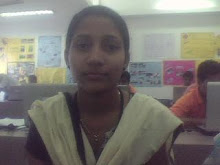Report on Microfinance
Introduction:
Yesterdays we learnt Microfinance. That day the class started as usual at 9.30 o’clock in the morning. Vijay Kulkrani came over class. He thought about ‘Microfinance’. Vijay Kulkrni teaching line is very good. In the morning we were presented PPT about microfinance. I got much information in that class. Actually I don’t know what is the Microfinance? When Vijay sir took the class, I learnt many things. Now I am come to tell about Microfinance.
Key Points of the Module:
What is Microfinance? “Microfinance offers poor people access to basic financial services such as loans, savings, money transfer services and micro insurance”. It means- Microfinance is a solution to the poorest people’s incapacity to find suitable employment and take needed credit. People living in poverty, like everyone else, need a different range of financial services to run their businesses, build, property, smooth expenditure, and manage risks.
Why microfinance need? Because there is an urgent need for microfinance instates to improve their capacity to reach the poorest families. However in bank ward regions, poor people, in calculation to microfinance, need a complete range of agricultural, business development services etc. And there is need and there is business opportunity. Three things we needed to microfinance.
· Investment
· Life cycle needs
· Emergency leads
Why poor need money?
· Their income is not enough to mange crises
· Lack admission to safe formal deposit services
· To help to overcome of thanks
· To uplift the social and economic status
· To help fulfill the basic needs
· To start a small business to produce income
· To make stronger the standard of living
Types of Banks-
· Cooperative bank
· Public sector bank
· Private sector bank
· Grameen bank
· Foreign bank
· No banking finance companies
Reach- One bank branch within 5 Kms
One bank branch for 5500 population
Who are the clients of microfinance? Client are often described according to their poverty level-
· Vulnerable non poor
· Upper poor
· Poor
· Very poor
This can we obscure the fact that micro clients.
Do very poor people repay their loans? Yes, microfinance clients are excellent credit risks. The repayment rate is between 95 and 98 percent. In fact it is higher than the repayment rate of student loans and credit card debts in the joint stats. They value the opportunity to improve their lives.
Conclusion (what I Learnt):
Totally Microfinance means the rider of financial services like credit, savings, insurance, etc. It involves small amounts of money and small loans. According to word bank ‘one person who spends per day less than 1% he or she considers as being below poverty line.
I should point out this is not thanks to microfinance but rather for profit big banks. Sometimes called “banking for the poor”. Microfinance is a wonderfully simple come near that has been confirmed to make powerful very poor people around the world to pull themselves out of poverty, very poor people, other financial services, and microfinance organization.
 Creativity
Creativity 












